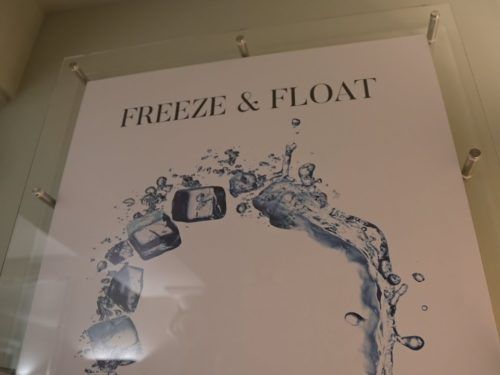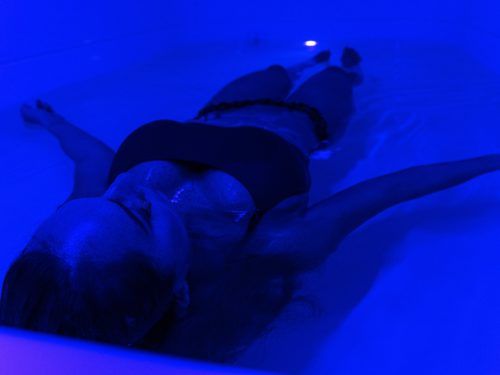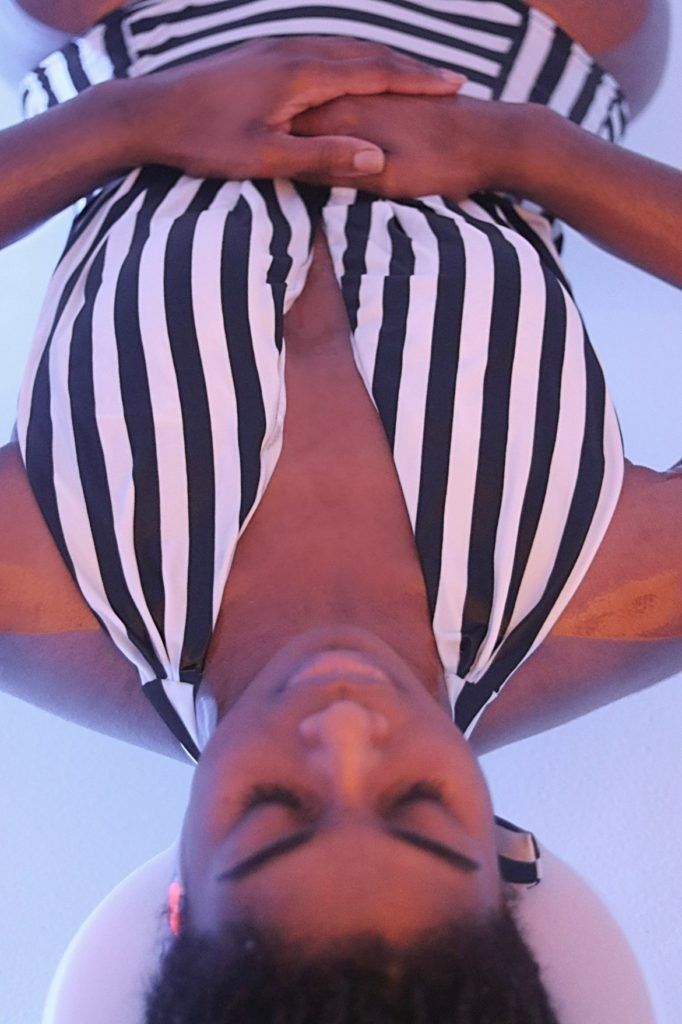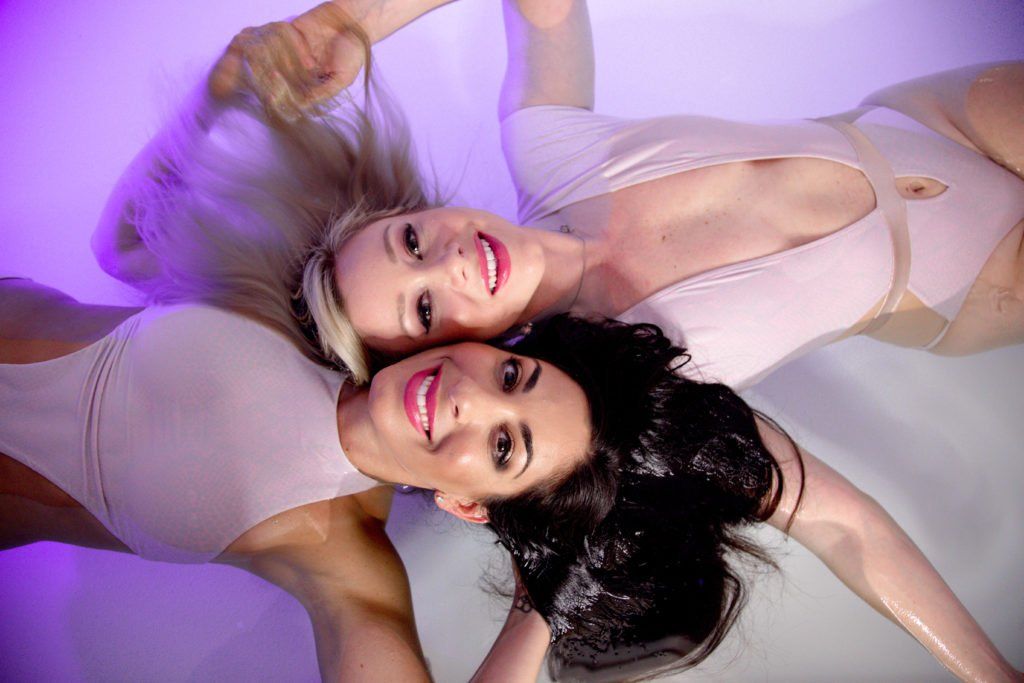How I Fell Asleep In A Sensory Deprivation Tank
Written by: Kelsey Marie on August 31, 2019

Full disclosure: prior to my first “float session,” I spent 45 minutes sweating out heavy metals and non-mindful thoughts in an infrared LED sauna at Freeze and Float Spa , a boutique wellness spa in downtown Chicago. By the end of my sweat session, I was already pleasantly relaxed and and well on my way to rejuvenation. Part of me just wanted to go home and melt into my 5-inch-thick, memory foam mattress topper and silk pillow case (don’t hate me). The other part prided myself on trying the latest holistic health trends (see also: cryotherapy, liver detoxes, IV vitamin drips, lymphatic drainage massages) before they floated off into relative oblivion, and tonight was the night I was scheduled to check the sensory-deprivation-float-tank-experience off my list.
The basic idea of floating in a sensory deprivation or isolation tank is simple: minimizing or completely removing the sensory input to the brain creates a deep state of mental tranquility and physical relaxation.
Floating provides an easier-to-access gateway to our deepest meditative state because it decreases our sensory input more than any other environment: sight is diminished by the darkness; weight is eliminated by the buoyancy of the salt-infused water; noise is reduced by the use of earplugs and a soundproof chamber; and smell is removed due to the enclosed and controlled nature of the space. By removing external stimuli related to gravity, light, sound, and touch, the autonomic nervous system resets, the body self-regulates, and the mind drops into its natural, stress-free state of being.
Like most first-time floaters, I was excited at the prospect of experiencing a potentially zero-gravity-like affect, but nervous about being enclosed in a small, dark space filled with water. I quickly learned that while some float sessions do occur in futuristic-looking tanks, (unfortunately portrayed as coffin-like pods on The Simpsons episode “ Make Room for Lisa ,”) float sessions at Freeze and Float Spa occur in a serene chamber that felt more like a bathtub in a small closet.
Now, let me address the underlying source of apprehension about floating —it’s not claustrophobia or drowning — it’s lack of control. I’m here to tell you that no matter the style of the tank, you are always in control of the float session. You can enter and exit the tank at your leisure. You can leave the door completely closed or partially open. You can keep the lights on, off, or dimmed. In other words —a “correct” float session is the set-up that makes you feel most comfortable.
The owner of Freeze and Float Spa , Karolina Stojanovic , walked me through the basic process of floating: remove clothes and jewelry; wash hair and body; dry face and ears; insert wax earplugs; cover any wounds with vaseline; enter float chamber (in my birthday suit); choose to keep door open a bit or closed; lower body into skin-temperature water; position supportive foam cutouts beneath head and knees; adjust music and lights to preferred setting (I opted for silence and dimmed, star-like lights); try to float for the full 60 minutes; shower to rinse off salt water and pre-enlightenment folly, then perhaps return to life feeling a little calmer, a little more connected to your higher Self.
I’ll admit the beginning of my float wasn’t a transcendental experience — I kept drifting into the sides of the float chamber; my earplugs slipped out; I struggled to comfortably position the toilet seat-looking foam cutout beneath my head; I couldn’t decide if I wanted to listen to the muffled, dream-like music or complete silence; I debated whether to float in complete darkness or with twinkle lights for what could potentially be an out-of-body experience.
Early on, even though I knew the epson salt water coupled with the foam cutouts behind my head and knees were enough to keep me floating, my body still wouldn’t relax into their supportive holds. Karolina had told me the first few minutes of my float might entail a tightening in areas of my body that needed the most “unknotting.” This would be an indication these areas (read: neck and shoulders) would initially resist relaxing, but eventually “twitch” or “pop” and release any built-up tension. My neck did indeed crack a few times, but I was still far from a spiritual, let alone intense, relaxed experience. Expectations truly have a way of ruining things.
I tried focusing on my breathing and the twinkling constellations on the chamber ceiling, but neither my conscious mind nor physical body was prepared to release their “unknotted” grasp on control. So I tried a different approach — a relaxation technique I recite to help my yoga students while easing into shavasana, the final resting or “corpse” pose of a practice. Starting at my feet, I politely told my body to please relax its toes and arches; then its ankles; then its calves and shins. Slowly, I worked my way up through my body, breathing deeply into each place of tension. Finally, I asked my body to relax its jaw, eyelids, and forehead (you’d be surprised how often you unknowingly scrunch your forehead muscles).
At last, I felt my body shift into a place of surrender. Stress, tension, and anxiety began to dissolve. The relentless yammering in my mind slowly faded to silence. I was peaceful and still. Weightless and free.
I couldn’t tell you how long it took for my body to become one with the water or my mind to become one with the present moment, but at some glorious point it happened. I know this because transcendental-like music began playing and jolted me back to reality and out of my semi-sleep, semi-awake state. Next, a soothing voice played over the chamber speakers to inform me that my session was complete.
The next few moments were a dream-like haze. I struggled to sit up in the chamber because my body felt warm and heavy. My eyelids slowly opened and closed as if searching for visual confirmation that this reality was indeed the final phase of tonight’s holistic health experiment.
Was it really over? What time was it? Did I fall asleep?
While showering to rinse the salt water from my body, I pleasantly realized I would’ve enjoyed more time in the chamber. An hour ago, I would’ve told you a 60 minute session was too long, yet, here I was feeling like a newly-enlightened woman who understood why the wisest of floaters prefer 90 minute sessions.
While I like to think floating will be most enjoyable when it unfolds naturally, without thought or direction, I was guilty of expecting my first session to be a completely distraction-free opportunity to meditate — I intended to visualize a future in which I was happy, healthy, and free from the stress of living with a chronic illness. Instead, I found myself falling asleep which was an outcome that brought even greater joy because insomnia has been one of my worst Lyme disease symptoms.
While my deep belly breathing practice allows equal time to breathe in and out (ideally 5-6 breaths per minute), helping to temporarily dissipate stress from my body, I was looking for a restorative experience that would reap in-the-moment-benefits, as well as post-experience relief from my state of chronic stress. The fact that I fell asleep was HUGE. This might not sound shocking coming from someone who requires a daily nap, but the fact that my subconscious mind felt “safe” enough to slip into a snooze fest while floating in a few inches of water was a win that would be written, highlighted, and circled in my gratitude journal.
If someone like me whose body is in a frequent fight or flight response could ease into a truly relaxed state of being during my very first float session, I bet the odds are in your favor to also feel wonderfully calm and centered, both physically and mentally. The more you float, the easier it becomes to turn down or even turn “off” the sensory inputs to our brain that provide content for an endless commentary on everything we should be doing, thinking, and feeling. The more you float, the easier it is to just be.
The post How I Fell Asleep In A Sensory Deprivation Tank appeared first on Freeze & Float Spa.








